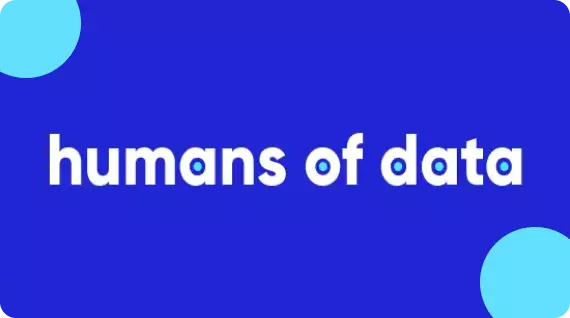What is a Data Lake in the Cloud? The Ultimate Guide!

Share this article
A data lake in the cloud is a centralized and scalable storage repository that allows organizations to store vast amounts of structured, semi-structured, and unstructured data. It leverages cloud-based infrastructure and services to provide a cost-effective and flexible solution for managing large volumes of diverse data types.
In a data lake, data is stored in its raw and native format, without the need for upfront data modeling or schema definition.
Modern data problems require modern solutions - Try Atlan, the data catalog of choice for forward-looking data teams! 👉 Book your demo today
This “schema-on-read” approach enables organizations to ingest data quickly, without the constraints of predefined schemas, and defer data structuring until it is needed for analysis or processing. This article delves into data lake and key characteristics of the cloud data lake.
Ready? Let’s dive in!
Table of contents #
- What is a data lake in the cloud?
- Key characteristics of a data lake in the cloud
- How does a data lake work in the cloud?
- What are the benefits of building data lakes in the cloud?
- Data lake vs data warehouse: What’s the difference?
- What are the challenges of building a data lake in the cloud?
- Are data lakes always cloud-based?
- Summary
- Related reads
What is a data lake in the cloud? #
A data lake in the cloud is a centralized and highly scalable repository for storing vast amounts of structured and unstructured data in its raw and original format.
Unlike traditional databases or data warehouses, which require data to be structured and organized before storage, a data lake allows organizations to accumulate data from various sources without the need for immediate transformation or predefined schema.
This flexibility is a key characteristic of data lakes, making them particularly well-suited for big data analytics, machine learning, and other data-intensive tasks.
In the context of cloud computing, data lakes are often built using cloud storage services like Amazon S3, Azure Data Lake Storage, or Google Cloud Storage. These services provide the infrastructure and scalability needed to handle large volumes of data efficiently.
Data is typically stored in these cloud-based data lakes as objects, files, or blobs, and it can come from diverse sources such as logs, sensors, social media, databases, or streaming platforms.
One of the primary advantages of using a cloud-based data lake is its cost-effectiveness and flexibility. Organizations can store massive amounts of data without incurring significant upfront infrastructure costs, as cloud providers offer pay-as-you-go pricing models.
Additionally, cloud data lakes can seamlessly integrate with various analytics tools, allowing data scientists and analysts to extract insights, perform data transformations, and build machine learning models directly from the raw data.
However, managing data quality, security, and governance within a cloud data lake can be complex. Organizations need to implement robust data management practices, access controls, and metadata management to ensure that data remains accurate, secure, and compliant with regulations.
When done correctly, a cloud-based data lake empowers businesses to harness the full potential of their data assets and gain valuable insights for strategic decision-making.
What are the key characteristics of a data lake in the cloud? #
First, let us understand the key characteristics of a data lake in the cloud, which include:
- Integration with cloud services
- Data security and governance
- Data processing and analytics
- Data cataloging and discovery
- Multi-tenancy and collaboration
Let us understand each of them in detail:
1. Integration with cloud services #
Data lakes in the cloud can seamlessly integrate with other cloud-based services, such as data analytics platforms, machine learning tools, and big data processing frameworks.
2. Data security and governance #
Cloud providers offer robust security features and compliance measures to protect data in the data lake. Organizations can implement access controls, encryption, and auditing to ensure data security and governance.
3. Data processing and analytics #
Cloud data lakes support various data processing and analytics capabilities, enabling organizations to perform complex data transformations, real-time analysis, and machine learning tasks.
4. Data cataloging and discovery #
Cloud data lakes often come with built-in data cataloging and metadata management tools, making it easier to discover and understand the data stored within the lake.
5. Multi-tenancy and collaboration #
Cloud data lakes can support multi-tenancy, allowing multiple teams or departments to share the same data lake while maintaining data segregation and access controls.
Popular cloud platforms that offer data lake solutions include Amazon Web Services (AWS) with Amazon S3, Microsoft Azure with Azure Data Lake Storage, and Google Cloud Platform (GCP) with Google Cloud Storage.
Overall, a data lake in the cloud provides organizations with the flexibility, scalability, and cost-effectiveness required to manage and extract valuable insights from vast and diverse datasets in a cloud-based environment.
How does a data lake work in the cloud? #
A data lake in the cloud works by leveraging cloud-based infrastructure and services to provide a scalable and cost-effective solution for storing and managing vast amounts of structured, semi-structured, and unstructured data.
Here’s an overview of how a cloud data lake typically works:
- Cloud storage
- Data ingestion
- Schema-on-read
- Metadata management
- Data processing and analytics
- Data governance and security
- Integration with other cloud services
Let us understand each of them in detail:
1. Cloud storage #
Cloud data lakes use object storage services provided by cloud providers, such as:
- Amazon S3 (Simple Storage Service) in AWS
- Azure Data Lake Storage in Microsoft Azure
- Google Cloud Storage in Google Cloud Platform
Object storage allows data to be stored as files or objects, making it suitable for handling diverse data types without the need for predefined schemas.
2. Data ingestion #
Data ingestion is the process of bringing data into the data lake. Cloud data lakes support various ingestion methods, including:
- Batch uploads
- Streaming data
- Integration with other cloud services.
Data can be ingested from various sources, such as databases, log files, IoT devices, APIs, and more.
3. Schema-on-read #
Unlike traditional databases, a cloud data lake follows a “schema-on-read” approach. This means data is stored in its raw and native format without any pre-defined structure or schema. The schema is applied only when data is read or processed for analysis.
4. Metadata management #
Cloud data lakes often come with built-in metadata management tools. Metadata includes information about the data, such as the:
- Data source
- Creation date
- Data format
- Data schema (if applicable)
Metadata helps with data discovery, understanding data lineage, and managing data governance.
5. Data processing and analytics #
Cloud data lakes support a wide range of data processing and analytics tools and services.
Organizations can use big data processing frameworks like Apache Spark or Apache Hadoop, serverless data processing services, and cloud-native data analytics platforms to extract valuable insights from the data stored in the data lake.
6. Data governance and security #
Cloud data lakes provide robust security features to protect data. Access controls, encryption, and auditing capabilities help ensure data security and compliance with regulations.
Organizations can implement data governance policies to control access, maintain data quality, and enforce data privacy.
7. Integration with other cloud services #
Cloud data lakes seamlessly integrate with other cloud-based services, such as:
- Machine learning platforms
- Data visualization tools
- Data warehousing solutions
This integration enables organizations to build end-to-end data pipelines and perform advanced data analytics tasks.
Overall, a cloud data lake provides a flexible, scalable, and cost-effective data storage and management solution. It empowers organizations to handle diverse data types, perform advanced analytics, and extract valuable insights to drive data-driven decision-making in a cloud-based environment.
What are the benefits of building data lakes in the cloud? #
Building data lakes in the cloud offers numerous benefits that empower organizations to efficiently manage and utilize their data assets. Here are some key advantages of adopting cloud-based data lakes:
- Scalability
- Cost-effectiveness
- Flexibility for diverse data types
- Fast data ingestion
- Real-time data processing
- Integration with cloud services
- Data security and compliance
- Data collaboration and sharing
- Rapid data insights
- Automated data management
Let us understand each of the above benefits in detail:
1. Scalability #
Cloud data lakes provide virtually unlimited scalability, allowing organizations to store and process massive volumes of data without worrying about infrastructure limitations.
As data volumes grow, cloud resources can be easily scaled up or down to meet the demand.
2. Cost-effectiveness #
Cloud data lakes follow a pay-as-you-go pricing model. Organizations only pay for the storage and computing resources they use, avoiding upfront hardware and infrastructure costs.
This cost-effective approach makes data lakes in the cloud a more affordable option compared to on-premises solutions.
3. Flexibility for diverse data types #
Cloud data lakes accommodate diverse data types, including structured, semi-structured, and unstructured data. They allow data to be stored in its raw and native format, eliminating the need for data transformation and schema enforcement upfront.
4. Fast data ingestion #
Cloud data lakes provide efficient and flexible data ingestion capabilities. Data can be ingested from various sources, such as databases, log files, IoT devices, streaming data, and more. This enables organizations to quickly onboard and ingest data from multiple systems.
5. Real-time data processing #
Cloud data lakes support real-time data processing and analytics. By integrating with streaming data services and big data processing frameworks, organizations can perform real-time analysis and gain insights from data as it arrives.
6. Integration with cloud services #
Cloud data lakes seamlessly integrate with other cloud-based services. This integration allows organizations to connect data lakes with data analytics tools, machine learning platforms, data visualization solutions, and data warehousing services for end-to-end data pipelines and advanced analytics.
7. Data security and compliance #
Cloud providers offer robust security features, data encryption, and compliance certifications to protect data in the data lake. Organizations can implement access controls and auditing to ensure data security and meet regulatory requirements.
8. Data collaboration and sharing #
Cloud data lakes support multi-tenancy, enabling different teams or departments to share the same data lake while maintaining data segregation and access controls. This fosters data collaboration and encourages knowledge sharing across the organization.
9. Rapid data insights #
Cloud data lakes, combined with advanced analytics tools, enable organizations to extract valuable insights from their data quickly. Data scientists and analysts can perform complex data analysis, machine learning, and AI tasks to drive data-driven decision-making.
10. Automated data management #
Cloud data lakes often come with built-in data cataloging and metadata management tools. These tools automate data management tasks, making it easier to discover, understand, and manage data assets within the lake.
In conclusion, building data lakes in the cloud offers organizations a powerful and flexible solution for storing, processing, and analyzing large volumes of diverse data. It provides cost-effectiveness, scalability, real-time capabilities, and seamless integration with other cloud services, empowering organizations to harness the full potential of their data assets and accelerate their data-driven initiatives.
Data lake vs data warehouse: What’s the difference? #
Data lakes and data warehouses are both widely used for storing big data, but they are not interchangeable terms. They serve different purposes and are designed for different use cases. Here’s a difference between data lakes and data warehouses:
| Parameter | Data Lake | Data Warehouse |
|---|---|---|
| Data type | Structured, semi-structured, unstructured | Primarily structured |
| Data structure | Schema-on-read | Schema-on-write |
| Storage cost | Generally lower | Typically higher |
| Performance | Can be slower for query tasks | Optimized for complex queries |
| Data processing | Uses various processing engines | Primarily SQL-based processing |
| Use-cases | Big data, real-time analytics | Business analytics, reporting |
| Scalability | Highly scalable | Scalable, but may have more constraints |
| Security & compliance | Can be challenging | Typically robust and well-established |
| Data quality & governance | May become a "data swamp" | High data quality and governance |
| User skill level | May require advanced analytical skills | Accessible with SQL knowledge |
What are the challenges of building a data lake in the cloud? #
While building a data lake in the cloud offers numerous advantages, it also comes with its own set of challenges. Here are some common challenges that organizations may face when establishing a data lake in the cloud:
- Data governance and security
- Data integration
- Data quality and consistency
- Data lineage and metadata management
- Cost management
- Performance and latency
Let us understand each of them in detail:
1. Data governance and security #
Managing data governance and ensuring data security in a cloud environment can be complex. Organizations need to implement robust access controls, encryption, and data masking to protect sensitive data and comply with data privacy regulations.
2. Data integration #
Integrating data from various sources into the data lake can be challenging, especially when dealing with data in different formats and structures. Ensuring data quality and consistency during the ingestion process is critical to avoid data discrepancies.
3. Data quality and consistency #
Data lakes often receive raw and unprocessed data, which can result in data quality issues. Maintaining data consistency and applying data cleaning and transformation processes as data is ingested into the lake is essential for accurate analysis.
4. Data lineage and metadata management #
Tracking data lineage and managing metadata in a cloud data lake can be complex, especially as the volume and variety of data increase. Ensuring data provenance and keeping track of data changes become more challenging as the data ecosystem grows.
5. Cost management #
While cloud data lakes offer cost-effectiveness, it is crucial to monitor and optimize resource usage to avoid unexpected expenses. Organizations need to be mindful of data storage, data processing, and network costs to ensure cost efficiency.
6. Performance and latency #
Cloud data lakes rely on network connectivity, which can introduce latency in data access and processing. Ensuring optimal performance for real-time analytics and data-intensive workloads can be a challenge.
In short, while building a data lake in the cloud offers numerous benefits, organizations must also address several challenges related to data governance, security, integration, data quality, and cost management. By proactively addressing these challenges, organizations can effectively leverage the potential of their cloud data lakes and gain valuable insights from their data assets.
Are data lakes always cloud-based? #
Data lakes are often cloud-based, meaning they are built and hosted on cloud computing platforms. Cloud-based data lakes leverage cloud infrastructure and services to store, manage, and process vast amounts of data, providing organizations with several benefits, including scalability, cost-effectiveness, and flexibility.
Cloud-based data lakes use cloud object storage services to store diverse data types, including structured, semi-structured, and unstructured data. The cloud providers offer storage solutions like Amazon S3 in AWS, Azure data lake storage in Microsoft Azure, and Google Cloud storage in the google cloud platform, specifically designed to handle large volumes of data in a distributed and scalable manner.
Using cloud-based data lakes, organizations can easily scale their data storage and processing resources to accommodate data growth and changing workloads. They can also take advantage of various cloud services, such as data processing frameworks, analytics tools, and machine learning platforms, to extract valuable insights from the data stored in the data lake.
Cloud-based data lakes have become increasingly popular due to their cost-effectiveness, ease of deployment, and ability to integrate with other cloud services. They have empowered organizations to leverage the benefits of cloud computing for efficient and powerful data management and analytics capabilities.
Summarizing it all together #
A cloud-based data lake is a modern and scalable data storage and management solution that leverages cloud computing platforms to efficiently store, process, and analyze vast amounts of diverse data.
It provides organizations with the flexibility to store structured, semi-structured, and unstructured data in its raw and native format, without the need for upfront data modeling or schema definition.
By leveraging cloud-based data lakes, organizations can harness the full potential of their data assets, perform advanced analytics, and make data-driven decisions.
The scalability, cost-effectiveness, and seamless integration with cloud services make cloud-based data lakes a powerful and essential tool for modern data management and analytics needs.
Data lakes in the cloud: Related reads #
- What is a data lakehouse: The best of data lakes and data warehouses.
- Data Swamp: Is It Sinking You?
- Data mesh vs data lake: Understanding decentralized and centralized approaches to data management.
- Data Warehouse vs Data Lake vs Data Lakehouse: What are the key differences?
- Data Catalog: Does Your Business Really Need One?
- Why does a data lake need a data catalog?
- Data Lakehouses: The Best of Data Lakes and Data Warehouses
- Data Lake & Data Governance: Unifying Disparate Data Sources for Business Success
Share this article









